How to cape a deer with
You are on page 1 of the deer caping article with Bobbi Meyer.
There are 10 photos illustrating how to cape a deer on this page.
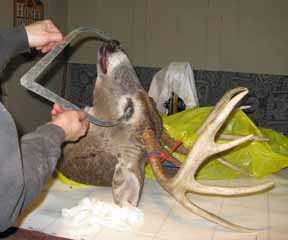
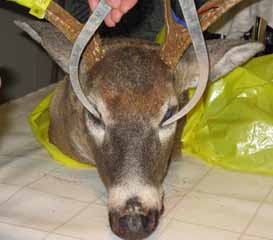
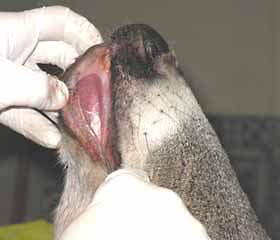
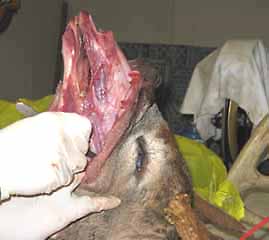
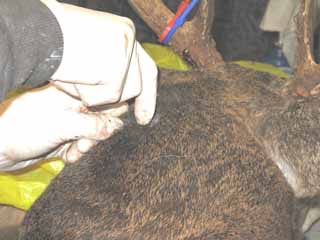
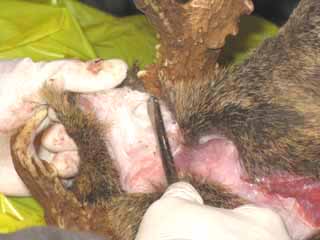
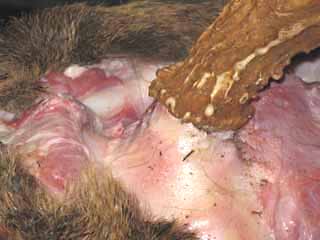
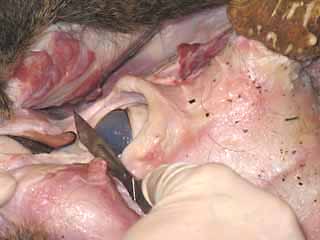
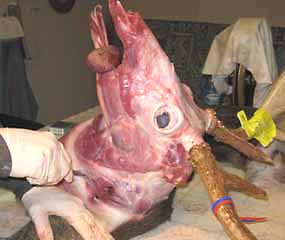
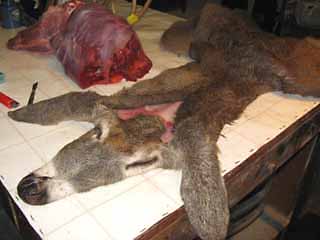
After I receive the animal, several measurements are taken. The nose to the front corner of the eye, and eye corner to corner measurements are taken before even starting the skinning. There are probably twenty different measurements I will take to ensure the proper sized form will be ordered.
The skinning process begins. The face of the deer is skinned most of the way from the nose back.
After skinning from the nose back to a certain point, I will start skinning from the back of the skull forward. Here I am using a short Y incision.
The "V" of the Y starts under each antler burr and the point of the "V" centers up on the head so that the leg of the Y comes down between the ear butt muscles. The leg of the Y is made long enough to allow the skull to be brought out through the Y shaped opening.
Skinning around the antler burr. Here is one of the antler bases completely free from the cape.
Next I'll skin around the eye area. Here is the head completely free from the hide. I'll continue skinning down the neck and the hide will be completely free from the carcass. Here is the cape completely free from the head and neck.
See pictures of whitetail deer mounts done by Bobbi Meyer.
Index of taxidermy and tanning articles.
WHITETAIL DESIGNER SYSTEMS, INC.
Has made another expansion! WEB SITE SERVICES for taxidermists are now available!
STOP-ROT was developed as an aid in preventing hair and epidermal slip. STOP-ROT on mammal skins extends the work time of a fresh hide by slowing down or stopping decompositions. It also helps to prevent freezer burn on frozen specimens. A lot of skins and capes that would normally be trashed can be saved with STOP-ROT. Not only has it been stopping epidermal and hair slips, it has also been improving efficiency of acids in the pickle. STOP-ROT makes fleshing and turning much simpler, faster and efficient.
Apply as soon as possible after the animal has been skinned. If it is a frozen skin or cape, apply as soon as possible during and after the thawing process.
STOP-ROT is available on-line from high lighted suppliers!
1-800-843-3320, Wildlife Artist Supply Company 1-800-334-8012,